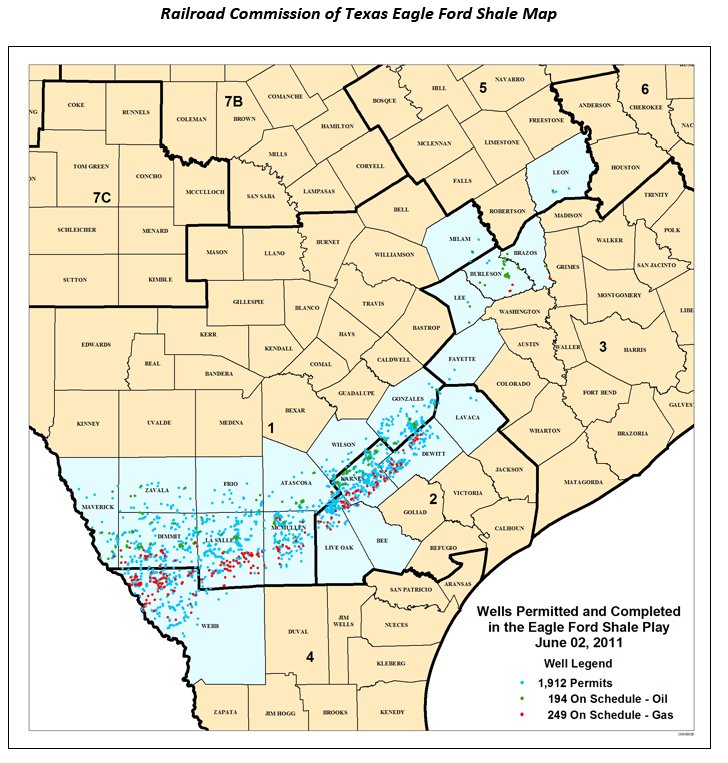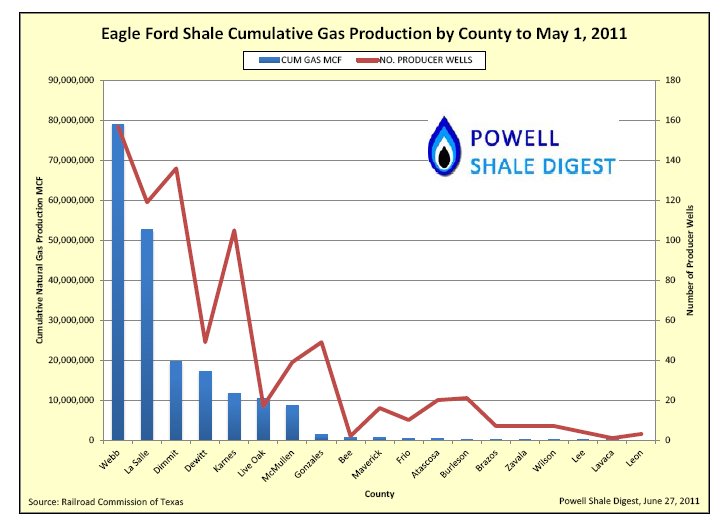The staff of the Texas Railroad Commission has proposed to the Commision rules to implement House Bill 3328, passed by the last Legislature, requiring the disclosure of chemicals used in frac fluids. The rules will be subject to a period for public comment, and a hearing will be held on the rules, now proposed for Wednesday, October 5.
Earlier this year, the 82nd Texas Legislature passed HB 3328,
requiring the RRC to adopt rules requiring disclosure of chemicals in
frac fluids. The draft rule would require operators to disclose chemical content of frac fluids on FracFocus, a website developed by the Ground Water Protection Council and the Interestate Oil and Gas Compact Commission.
(The website contains a lot of good information about hydraulic
fracturing and its benefits and risks.) FracFocus was launched on April 1, 2011. As of August 16, 2011, according to RRC staff, operators had
registered 950 Texas wells on the website, including wells drilled by
Anadarko, Chesapeake, Chevron, Conoco-Phillips, Devon, El Paso, Energen,
EOG, Forest, Newfield, Occidental, Penn Virginia, Petrohawk, Pioneer,
Plains, Range, Rosetta, Shell, Williams, and XTO. You can search for a
well near you by using FracFocus’s search feature. An example of the
information disclosed can be found here: 4243935364-3212011-10792272-CHESAPEAKE[1].pdf The disclosure includes the percentage by mass of each chemical used in the frac fluid.
Under the proposed rule, an operator must also provide the same
information with its completion report for the well, as part of the
completion report. The completion report for all Texas wells can also be found on the RRC’s website.
RRC’s staff’s discussion of the proposed rule estimates that 13,000
wells undergo frac treatment in Texas each year — 85% of all wells
drilled in Texas.
A supplier, service company or operator is entitled under the draft
rule to claim trade-secret protection for a chemical additive. If such
protection is claimed, the particular chemical and its concentration
need not be provided, but the operator must disclose the chemical family of the ingrediant and the properties and effects of the chemical. The
claim of trade-secret protection may be challenged by the landowner on
whose property the well is drilled or any adjacent landowner, or by any
state department or agency with jurisdiction over issues related to
health and safety. Any such challenge must be filed within 2 years after the claim of trade-secret protection was filed. If a challenge is filed (with the RRC), the RRC refers the matter to the Texas Attorney General who makes a determination, based on evidence submitted by the person
claiming trade-secret protection, of whether the identity of the
chemical is in fact a trade secret under Texas law. The AG’s
determination may be appealed to a state district court. If a
trade-secret exemption is claimed, a health professional or emergency
responder may still obtain the information but must keep it confidential except to the extent it must be disclosed to protect health and safety.
An operator who fails to disclose as required by the rule may have its operating permit revoked.
Continue reading →






